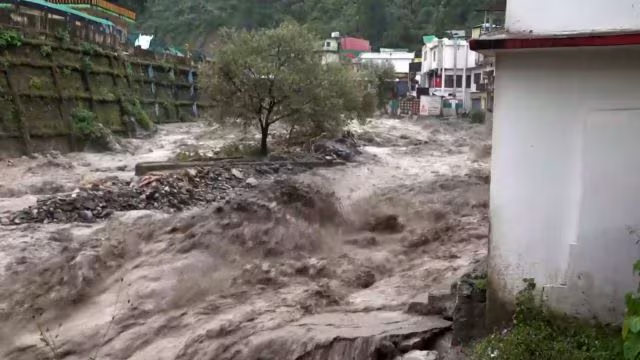
Punchline: When the Queen of Hills turned into an island of resilience, Mussoorie’s stranded souls found shelter in solidarity even as the floods washed away roads, lives, and certainty.
A Hill Station in Crisis
Mussoorie, one of India’s most cherished hill stations, has been left stranded after torrential rains, cloudbursts, and landslides devastated Uttarakhand’s Dehradun district. On September 17, 2025, connectivity between Dehradun and Mussoorie was completely severed due to the collapse of key roads, the washing away of bridges, and debris blocking vital access routes. The “Queen of Hills,” usually buzzing with tourists, was suddenly cut off, leaving thousands in a state of fear and helplessness.
Thousands Stranded, Patients in Peril
Authorities estimate that nearly 2,500 to 3,000 tourists remain stranded in Mussoorie. Among them are elderly citizens, children, and medical patients in urgent need of treatment. In one heartbreaking instance, a kidney patient named Mukesh was unable to reach Dehradun for dialysis due to road closures. Reports suggest that around a dozen patients are awaiting airlift or alternative transport, highlighting the human cost of broken infrastructure. Ambulances are stationed on both sides of collapsed bridges, but the absence of functional routes has left medical staff frustrated and families desperate.
Local Heroes: Hotels Open Doors for Free
In an extraordinary gesture of solidarity, local hotels have thrown open their doors to stranded visitors, offering free accommodation and meals until conditions improve. The Mussoorie Traders Welfare Association, along with hoteliers and volunteers, has stepped in to provide immediate relief. Makeshift kitchens have been set up to ensure that basic meals reach as many people as possible. Social media is flooded with images of hoteliers providing blankets, food, and shelter to stranded families, showcasing the resilience and humanity of the hill town’s residents.
Loss of Lives and Livelihoods
The disaster has already claimed at least 13 lives in Dehradun district, with 16 others reported missing. Entire villages and popular tourist spots like George Everest, Kempty Falls, and Galogidhar have been battered. Houses, shops, hotels, culverts, and bridges lie damaged or destroyed. Local businesses, dependent on tourist footfall, are staring at massive economic losses. The collapse of basic services such as electricity, fuel supply, and food delivery has intensified the crisis, leaving both residents and visitors in uncertainty. Farmers in nearby valleys also report that fields have been submerged, destroying seasonal crops and further compounding the economic blow.
Relief Efforts Underway
State authorities, aided by the SDRF, PWD, and district administration, are racing against time to restore connectivity. Construction of an alternate Bailey bridge near Kolhukhet has begun to allow light vehicle passage, while heavy machinery is deployed to clear debris from major roads. Helicopters are on standby for medical evacuations, though bad weather has hampered some sorties. Relief camps have been established in Dehradun to assist evacuees with food, shelter, and medical care. Meanwhile, the India Meteorological Department has issued fresh orange alerts, warning of more rainfall and potential landslides in the region.
Voices from the Ground
Stranded tourists have described the experience as terrifying, with many running short on essential medicines, baby food, and drinking water. “We came here for a holiday but are now living in fear every hour,” said Ritu Sharma, a tourist from Delhi. Local residents, too, are struggling as grocery supplies dwindle and fuel pumps remain dry. Yet, despite hardships, community kitchens and volunteer groups have emerged as lifelines, proving once again that solidarity shines brightest in moments of despair.
A Climate Warning for the Himalayas
The Mussoorie floods are yet another reminder of the fragility of Himalayan ecosystems. Experts warn that increasing urbanization, unchecked construction along fragile slopes, and intensifying monsoon patterns are making landslides and flash floods more frequent. The memory of the 2013 Kedarnath tragedy remains fresh, and many fear that without climate-resilient planning, such disasters could become the norm. Scientists are urging the government to prioritize sustainable urban planning, restrict construction in high-risk zones, and invest in disaster-resilient infrastructure to protect vulnerable communities.
The tragedy unfolding in Mussoorie is not just a natural disaster; it is a mirror reflecting India’s preparedness challenges, the courage of its citizens, and the urgent call for climate-conscious development. As stranded patients await rescue and hotels shelter tourists for free, the story of Mussoorie stands as both a warning and a testament to human solidarity in the face of adversity.
FOR MORE BLOGS – beyondthepunchlines.com

 Add to favorites
Add to favorites








